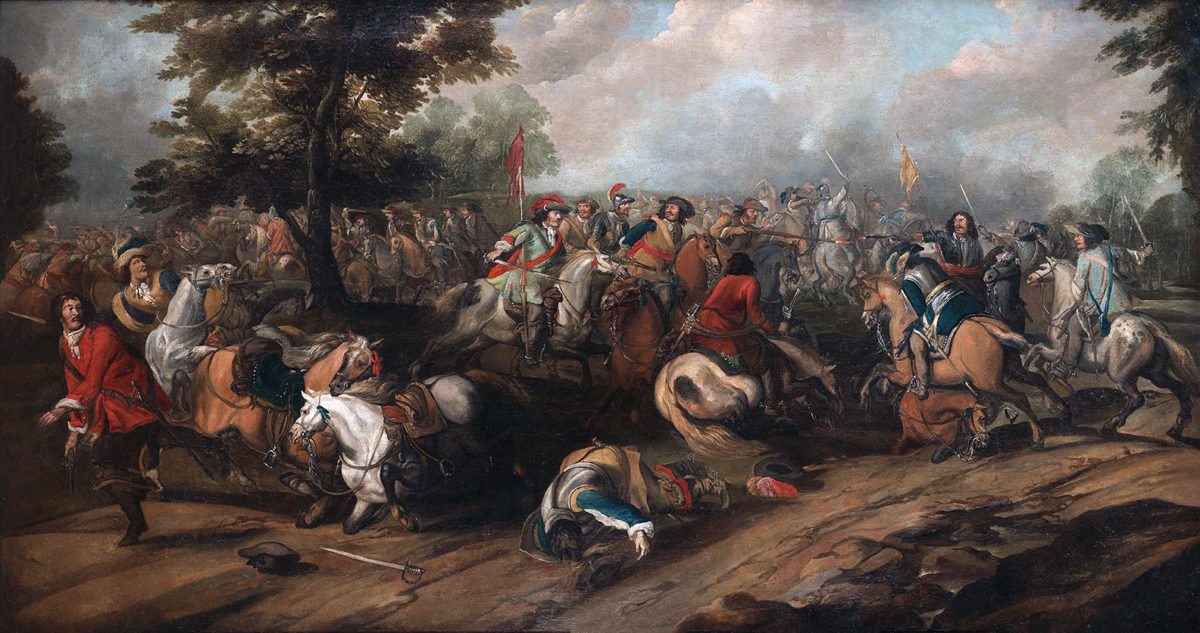Fought on Sept. 17, 1631, the Battle of Breitenfeld was the first major Protestant victory of the Thirty Years’ War. The epic clash pitted the opposing factions’ most outstanding generals against one another. King Gustavus II Adolphus of Sweden commanded both his own Swedish forces and those of the Protestant Electorate of Saxony. Johann Tserclaes, Count of Tilly, commanded the combined forces of the Holy Roman empire and the Catholic League. Sparked by the Reformation, the war was among the costliest conflicts in European history, with combat, disease and famine claiming as many as 8 million soldiers and civilians. Neither Gustavus nor Tilly would live to see its conclusion.
Born in 1559 to devoutly Roman Catholic parents in Walloon Brabant (in present-day Belgium), Tilly fought Protestant Dutch rebels during the Eighty Years’ War (c. 1566–1648) and Ottoman Turks in Hungary and Transylvania in 1600. In 1610 Duke Maximilian I of Bavaria appointed the veteran field marshal commander of the Catholic League forces. From the outset of the Thirty Years’ War in 1618 Tilly’s impressive string of victories included the Battle of White Mountain (1620), the Battles of Wimpfen and Höchst (1622), the Siege of Heidelberg (1622), the Capture of Mannheim (1622), the Battle of Stadtlohn (1623), the Battle of Lutter (1626) and the nightmarish Sack of Magdeburg (1631). Tilly’s cavalry commander at both Magdeburg and Breitenfeld, four months later, was the fearsome Gottfried Heinrich, Count of Pappenheim. Together they formed one of the most dominating command combinations in the history of warfare.
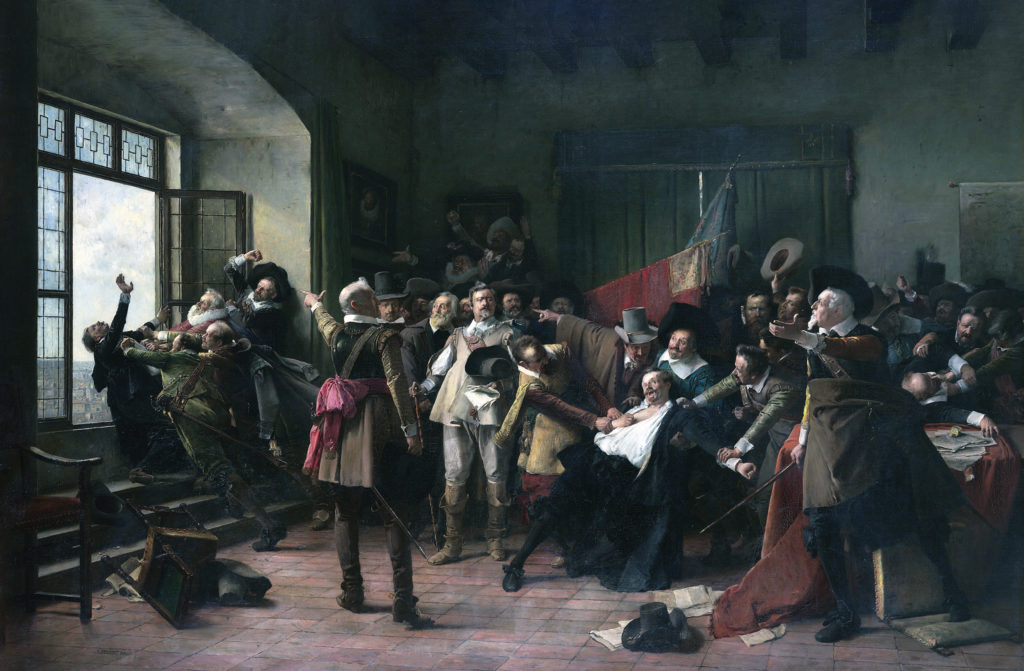
Contrary to widespread belief, the Thirty Years’ War was far more complex than a strictly religious struggle between Catholics and Protestants, though it more or less started that way. With the signing of the Peace of Augsburg in 1555 subjects of the Holy Roman empire were required to follow the religion of their local princes. Most German princes around the turn of the 17th century were Protestant—either Lutheran or Calvinist—though the Duke of Bavaria was Catholic. Outside of Germany proper, most other members of the loosely knit empire, including Bohemia, much of northern Italy and Austria, were predominantly Catholic. The Austrian capital of Vienna was the seat of the empire.
In theory the emperorship was an elective, rather than a hereditary, position. That said, the Catholic House of Hapsburg had held the imperial throne since 1440 and fully intended to keep it. Whenever an emperor died, seven prince electors (three spiritual and four secular) determined who his successor would be. All three spiritual electors—the archbishops of Mainz, Trier and Cologne—were Catholics loyal to the Hapsburgs. Of the four secular electors—the rulers of Bohemia, Brandenburg, Saxony and the Palatinate—only the king of Bohemia was Catholic, though his realm did have a large and growing Protestant minority. Thus, the Hapsburgs could count on a 4-to-3 majority. The trouble started in 1618 when Ferdinand II, Holy Roman emperor and king of Bohemia, started cracking down on the rise of Protestantism in his kingdom. As it wasn’t part of Germany proper, Bohemia did not fall under the terms of the Peace of Augsburg, thus its citizens were used to considerably more religious freedom. That May a group of angry Bohemian Protestants stormed into the royal palace in Prague and tossed two of the leading Catholic regents and their secretary out of a third-floor window—an act remembered as the “Defenestration of Prague.”
Though the men survived their fall, the incident was too much for Ferdinand. He sent military forces marching toward Prague, and the Thirty Years’ War was on. Everything exploded in August 1619 when Frederick V, the elector Palatine, accepted the throne of Bohemia from the Protestant Bohemian electorate. Thus, Frederick held two electoral seats, giving Protestants the 4-to-3 majority when selecting a future new emperor. Ferdinand was determined to make an example of the Protestant rebels.
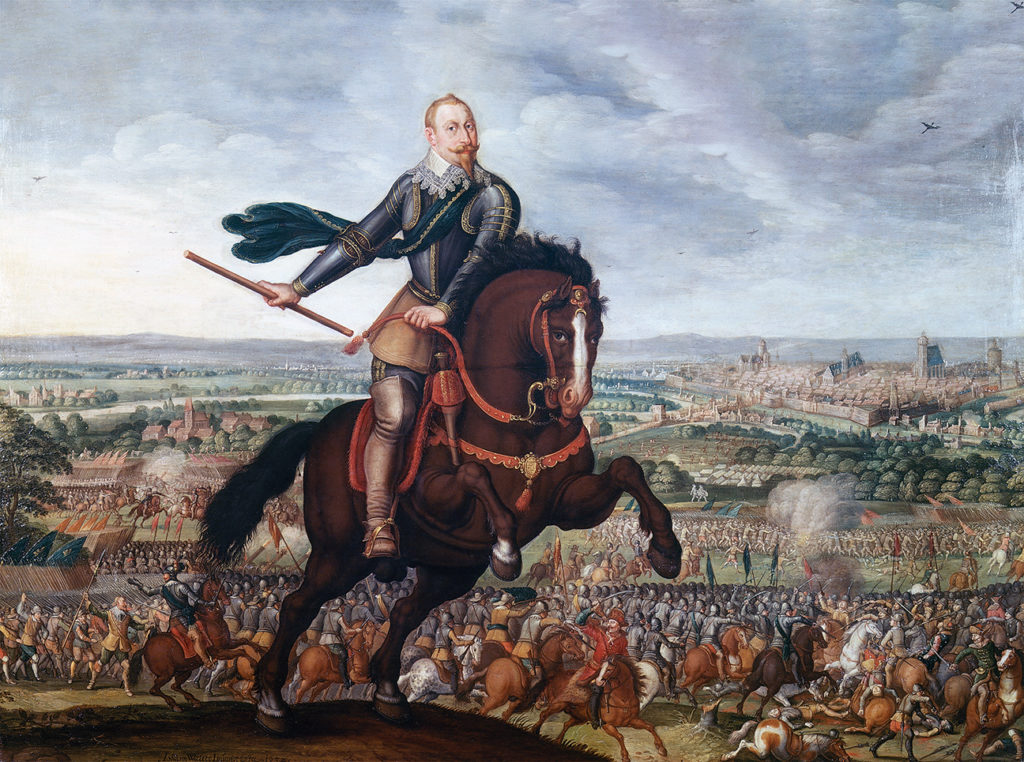
On Nov. 8, 1620, Catholic League forces under Tilly crushed the Protestants at the Battle of White Mountain near Prague, and Frederick fled Bohemia. Given his short reign, he’s been known to history ever since as the “Winter King.” Ferdinand later stripped Frederick of his lands in the Palatinate (roughly comprising the present-day German state of Rhineland-Palatinate) and transferred them to Maximillian of Bavaria, along with the electorship. The emperor also had his son, the future Emperor Ferdinand III, installed on the Bohemian throne, shifting the electoral advantage 5-to-2 in favor of the Catholics.
Although Catholic, the ruling Bourbons of France were bitter enemies of the Hapsburgs, who also ruled Spain at the time. Cardinal Armand-Jean du Plessis, Duke of Richelieu, was the chief minister of King Louis XIII. Seeing a chance to strike at the Austrian Hapsburgs while they were tied down with the brewing war in Germany, Cardinal Richelieu financed Protestant Swiss mercenaries to fight the German Catholics. When the Spanish Hapsburgs started putting pressure on France from the south, Richelieu made a further alliance with Protestant King Christian IV of Denmark to oppose the combined forces supporting the emperor. Christian was also the Duke of Holstein and, therefore, had a direct stake in any conflict in northern Germany. England and the Dutch Republic also pledged financial support for Denmark.
On the orders of Emperor Ferdinand, Tilly marched his Catholic League army north and crushed the Danes at the Battle of Lutter on Aug. 27, 1626. Meanwhile, Ferdinand’s imperial army, under the command of Bohemian generalissimo Albrecht Wenzel Eusebius von Wallenstein, started marching to the east along the Baltic coast, threatening to overrun the free port cities of the Hanseatic League. If imperial forces managed to gain control of the south coast, that—in tandem with extant Polish and Russian control of most of the eastern Baltic—would effectively seal off Protestant Sweden from the rest of the world. Of more immediate concern, the Baltic ports could be used by the Holy Roman emperor as a base for an invasion of Sweden.
In mid-May 1628 Wallenstein launched a siege against the strongly fortified Hanseatic port of Stralsund, Pomerania. On concluding an alliance with Stralsund weeks later, Sweden’s King Gustavus sent a small garrison to defend the port. They were the first Swedish soldiers in history to set foot on German soil. Wallenstein conducted a landward siege only, as he lacked the necessary naval forces to blockade the harbor. The local and Swedish forces, with considerable support from Scottish mercenaries and the Danish fleet, held out until Wallenstein gave up and lifted the siege on August 4. It marked Wallenstein’s first defeat in the Thirty Years’ War and contributed to his temporary dismissal from command in 1630. That in turn left Tilly as sole commander of the combined Catholic League and imperial forces, which numbered some 80,000 troops in Germany. The siege of Stralsund also brought Sweden into the war as a full participant.

Gustavus’ first order of business was to control the southern Baltic and thus keep the Catholic powers from severing his lines of communication. A gifted military reformer, he was the greatest commander of the Thirty Years’ War. Though only 35 years old in 1630, he had already been king for 19 years. His well-equipped and -trained army had been honed by decades of fighting in Denmark-Norway, Poland and Russia, during which Gustavus perfected an innovative system of tactics derived from his study of ancient Greek and Roman warfare.
Gustavus reduced the size of the large and unwieldy cavalry squadrons of the period, increasing their speed and mobility, and he widened the intervals between his infantry battalions. Rather than rely on the usual single battle line, he deployed his forces in two echelons, the second line held as a reinforcement for the first. He further reinforced his cavalry by deploying supporting infantry among the horse. In modern parlance his tactical system is known as “combined arms.” Considered the father of modern field artillery, Gustavus employed highly mobile guns with high rates of fire. He excluded anything heavier than a 12-pounder from his field batteries. His bronze 3-pounder regimental gun could be towed by a single horse or three men and boasted a rate of fire half again faster than muskets of the period.
Gustavus was a deeply religious Protestant whose troops went into battle singing hymns. He forbade his troops from pillaging, looting and mistreating civilians, unlike most armies of the medieval period. He also required them to pay for all supplies received from towns and villages along their line of march. As a result, locals generally welcomed, or at least tolerated, the Swedish army wherever it went.
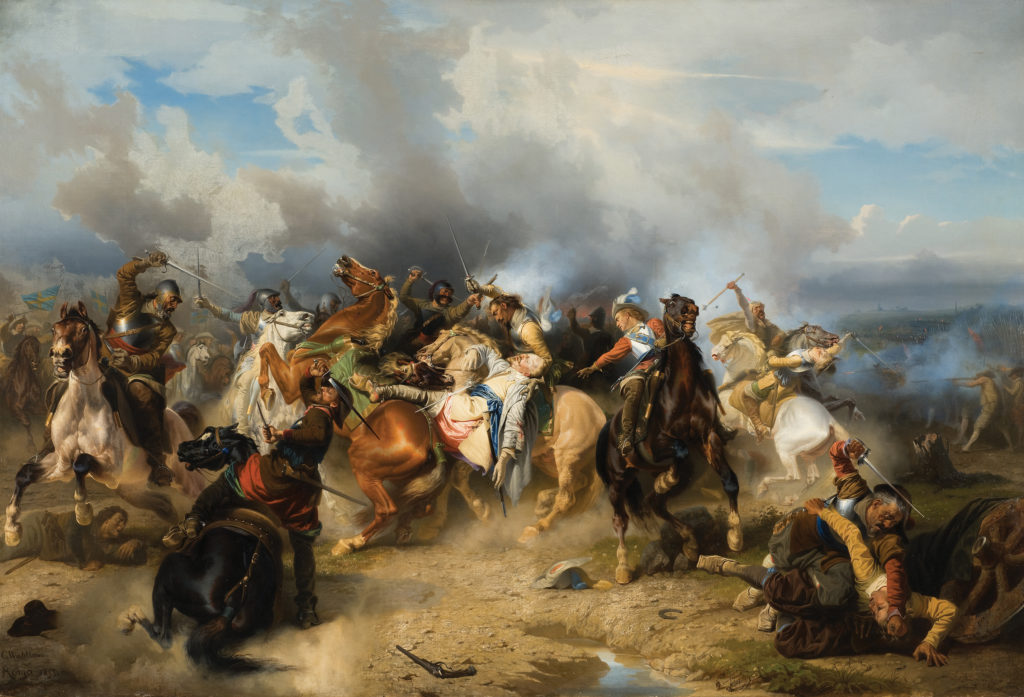
The Swedish king invaded Pomerania with an initial force of 13,000 troops, landing near Peenemünde on July 6, 1630. They were soon reinforced by a follow-on echelon of 5,300 troops from Sweden and Finland. That fall the Swedish king concluded an alliance with Bogislaw XIV, Duke of Pomerania. Recruiting locally, Gustavus was able to assemble a force of 43,000. Seizing the opportunity to strike a further blow against the Hapsburgs, Cardinal Richelieu signed the Treaty of Bärwalde with Gustavus, providing him with financial support of one million livres per year. Richelieu even went so far as to encourage the Ottoman Turks to increase their pressure on Austria from the east.
The imperial court at Vienna initially greatly underestimated the Swedish threat, dismissively calling Gustavus the “Snow King”—held together by the cold of the north, but who inevitably would melt and disappear the farther south he went into Germany. Overconfident of his earlier successes in Germany, Emperor Ferdinand in 1629 had sent a large German army over the Alps to support the Spanish Hapsburgs, who were fighting the French in northern Italy over the succession of the Duchy of Mantua. Gustavus, meanwhile, managed to drive all Catholic forces out of Pomerania, forcing Ferdinand to refocus his attention on the main theater of war, as the Swedish king pushed ever deeper into Germany.
The Saxon city of Magdeburg, on the left bank of the Elbe River, was among the most important commercial centers in medieval Germany. It was also a Protestant stronghold. With a population of more than 35,000, Magdeburg at the outbreak of the Thirty Years’ War sought to remain neutral. As imperialist pressures on the town grew, however, the city council entered into an alliance with Gustavus in August 1630. That November, in anticipation of an imperial siege, the Swedish king sent Dietrich von Falkenberg, an experienced Protestant German officer, to Magdeburg to organize its defense and command the garrison, which ultimately numbered 2,400 trained troops and perhaps another 3,000 local militia. Gustavus, meanwhile, continued his operations to clear the Baltic coast and establish a secure base of operations. In April 1631 he captured the key Brandenburg town of Frankfurt an der Oder.
By March 1631, meanwhile, imperial forces under Tilly and Pappenheim, numbering 24,000, had closed in on Magdeburg. When Tilly demanded its capitulation, Falkenberg refused, believing the Swedes would soon come to his relief. Gustavus, however, was well beyond striking distance. Tilly put his artillery into battery and commenced a fierce bombardment of the city, but Falkenberg still refused to surrender. Finally, on May 20 imperial forces assaulted the town, penetrating its defenses in short order. Falkenberg was shot dead while trying to organize a counterattack. Emboldened imperial troops set fire to the town, and many attackers went rogue, looting, raping and massacring civilians over several days. More than 20,000 defenders and inhabitants were killed or died in the spreading fire. In the aftermath, imperial troops had to dump more than 6,000 bodies into the Elbe to clear the streets. At least that many had been consumed by the flames. (A census taken a year later tallied only 449 residents in Magdeburg, and much of the city remained a rubble field into the 1700s.)
A month later Pope Urban VIII sent Tilly a congratulatory letter, writing, “You have washed your victorious hands in the blood of sinners.” But the Sack of Magdeburg, the single worst atrocity of the Thirty Years’ War, became a cause célèbre for the Protestant princes of Germany, stiffening their resolve to resist the Catholics. Saxony and Brandenburg, whose rulers were both electors, allied with Gustavus. It didn’t hurt that Gustavus was married to the sister of Georg Wilhelm, the elector of Brandenburg. For the first time in the war the Protestants had something close to a unified command, and the combined forces gave the Swedish king the necessary strength to march south into Germany and seek decisive battle with Tilly.
After Johann Georg I, Elector of Saxony, formally allied himself with Gustavus on Sept. 11, 1631, Tilly initiated a punitive campaign, setting out to ravage Saxony with about 36,000 troops. On September 15 he captured Leipzig, which his men looted. But the imperial commander neglected the opportunity to attack the weak Saxon army of 16,000 troops before they managed to link up with Gustavus’ 26,000 Swedes at Düben, some 40 miles north of Leipzig. On the urging of his cavalry commander, Pappenheim, Tilly abandoned town and took up a position at Breitenfeld, 5 miles to the north.
The opposing forces sighted each other early on the morning of September 17. Tilly deployed his single line of infantry in the center with cavalry on the wings. He commanded the center and right, Pappenheim the left. The imperial artillery was massed in the center and center right and emplaced on high ground to the rear. Gustavus deployed his troops in his signature two lines. Rather than the traditional Spanish-designed tercio square formation of massed pikemen with musketeers on its corners, the Swedish infantrymen were grouped in smaller, more mobile formations, with musketeers predominating and pikemen protecting. Throughout the forthcoming battle Gustavus’ lighter and more mobile artillery would exact a heavy toll on the densely packed imperial formations.
Tactical Takeaways
- Peace out the window. If diplomacy remains an alternative to warfare, it’s probably best not to storm the royal palace and pitch officials from a third-story window.
- Don’t follow the crowd. Gustavus’ willingness to break with traditional tactics of the period and employ a combined arms approach won battles.
- Never give up. When Gustavus was shot from his horse at Lützen, Bernhard of Saxe-Weimar took up the banner, kept fighting and secured victory for Protestants and their fallen commander.
Saxon infantry, cavalry and artillery under Elector Johann Georg held the left of the Protestant line, while Swedish and other German infantry units occupied the center and right. Most of the Swedish cavalry deployed on the right wing, opposite Pappenheim. Gustavus’ reserve cavalry was at the center, between the two echelons of infantry. Finnish Field Marshal Count Gustav Horn commanded the Swedish left (the overall Protestant center) directly against Tilly, while the Swedish king positioned himself on the far right, opposite Pappenheim.
Tilly made the opening move. Rather than launch an immediate attack, he resolved to pound the enemy for as long as possible with his heavier, longer-range guns. He ordered the imperial artillery to open up as Gustavus’ force was deploying. The firing continued until midday, prevailing winds blowing the thick gun smoke and dust directly into the faces of the Swedes and Saxons. When the firing ceased, the impetuous Pappenheim, acting without orders, led his cavalry in an attempt to turn the Swedish right flank. In a brilliant move, Gustavus wheeled his reserve horse, catching Pappenheim between his two cavalry forces. The Swedish king also rapidly repositioned his light guns and opened up with grapeshot against the imperial horse. Gustavus’ guns and musketeers easily outranged the pistol fire of the imperial cavalry. Pappenheim hit the Swedish line seven times, and each time he was repulsed with greater losses, finally forcing him to withdraw.
Only then did Tilly advance against the Saxons. The rapid, accurate fire from the Swedish line drove his men increasingly to the right, but ultimately the Saxons broke, Elector Johann Georg himself falling back on Eilenberg, a dozen miles to the east. Messengers prematurely set out toward Munich and Vienna carrying news of the Catholic victory.
Meanwhile, Tilly turned against the exposed Swedish left flank. Gustavus immediately redeployed three regiments from his right to shore up his left. While Horn’s infantry held off Tilly’s attack, Gustavus routed the remainder of the Catholic left wing. With his own right wing freed, the king then advanced against the Catholic guns on the high ground to Tilly’s rear, rolling up Tilly’s left flank in the process. On capturing the imperial guns, Gustavus’ gunners turned them on their former owners from the rear.
After seven hours of fighting, Gustavus’ forces had almost wholly enveloped Tilly’s troops. Protected by four veteran regiments that had never fled from a fight, Tilly fought his way out of the encirclement. Once free of the Swedes, the disciplined imperials formed a defensive perimeter and continued to resist until nightfall, at which point the wounded Tilly had only 600 effectives under his command. The surviving Catholic forces withdrew toward Halle, some 17 miles to the west. On reaching safety, Tilly and Pappenheim were able to muster only about 2,000 men between them. The imperial forces had lost around 7,000 dead, 6,000 captured, 3,000 wounded and 3,400 missing. The Swedes had lost some 2,100 killed, the Saxons 3,000.
Leaving Johann Georg and his Saxon troops to clear Leipzig, Gustavus turned southwest and drove deeper into Germany. After clearing the Palatinate of imperial forces, he established winter quarters near the Rhine. Hoping for a return to his throne, deposed Elector Frederick V met Gustavus at Frankfurt in February 1632. The Swedish king, however, said he would support Frederick only if the latter would hold the Palatinate as a fief of the king of Sweden. Gustavus also insisted that Frederick, a staunch Calvinist, agree to grant equal rights to Lutherans in the Palatinate. Frederick refused, the two parted, and the hapless elector never regained his throne.
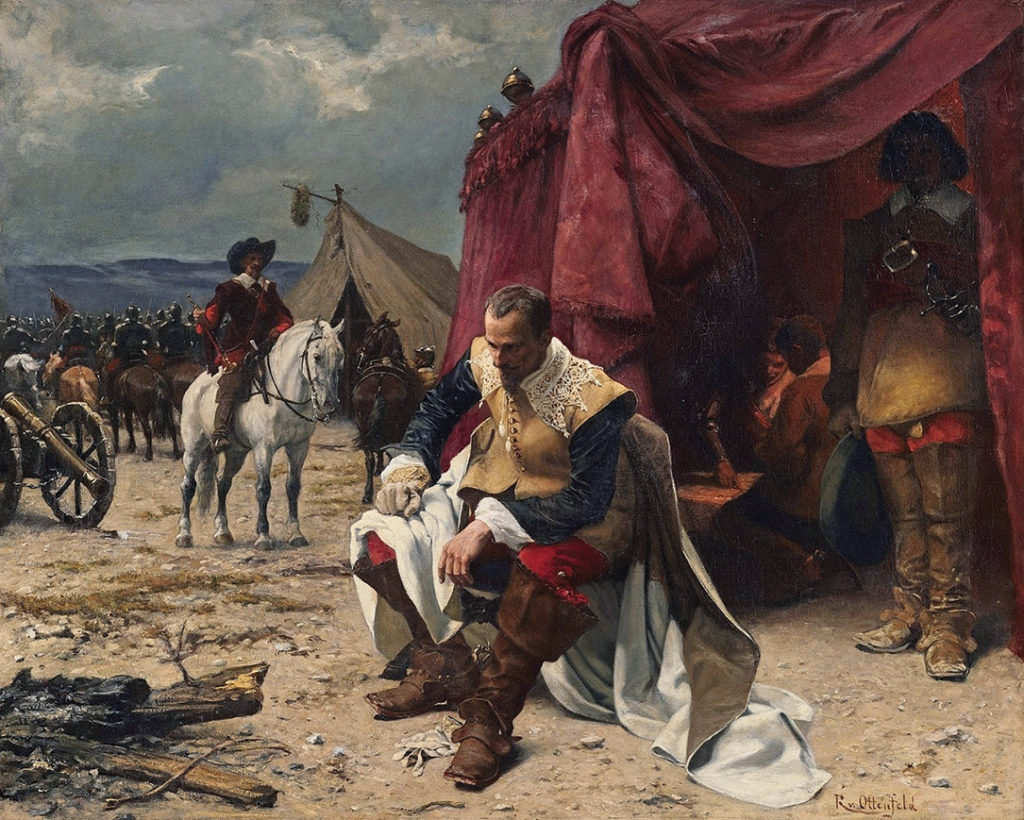
That March Gustavus turned west and invaded Bavaria. On April 15 he again faced Tilly at the Battle of Rain, waged over defensive works centered on that town along the River Lech. Outnumbering the Bavarians roughly 37,500 to 22,000, the Swedish king won a decisive victory, thanks largely to his superb artillery. Tilly took a bullet to his thigh and died of infection 15 days later at age 73. On May 17 Gustavus made a triumphal entry into Munich. He then quickly cleared most of Bohemia. On the verge of panic, Emperor Ferdinand recalled Wallenstein from forced retirement and again put him in command of all imperial and Catholic forces.
Gustavus and Wallenstein clashed for the first time that September 3 and 4 at the Battle of the Alte Veste, near Nuremberg. In that largest battle of the war, which pitted nearly 90,000 men against one another, the previously invincible Gustavus suffered his first tactical defeat, though the strategic results were indecisive. The two great commanders met once more, on November 16, at the Battle of Lützen. While this time Wallenstein was soundly defeated, Gustavus was killed after becoming separated from his troops while leading a cavalry charge on his flank. About the time Gustavus fell, Pappenheim, the great imperial cavalry commander, was mortally wounded on another part of the field.
The death of the Swedish king broke the Protestant momentum, and the course of the war waffled back and forth. Unfortunately for the people of central Europe, the Thirty Years’ War ground on another horrific 16 years. After losing to Gustavus, Wallenstein grew increasingly disillusioned with Emperor Ferdinand and opened secret peace negotiations variously with France, Sweden, Saxony and Brandenburg. When the Holy Roman emperor learned of his field marshal’s covert dealings, he charged Wallenstein with treason and issued orders for him to be brought to Vienna—dead or alive. Wallenstein was at his headquarters in Eger (present-day Cheb, Czech Republic), on the Bohemian-Bavarian border, when a group of his own Scottish and Irish mercenary officers assassinated him on Feb. 25, 1634.
Thus, none of the war’s four greatest battlefield commanders lived to see its resolution. Sweden remained in the fight, mostly under the command of Field Marshal Horn, and the Thirty Years’ War finally ended in 1648 with the Peace of Westphalia, which again allowed rulers of the imperial member states to choose their own religious affiliation.
Gustavus’ remains were eventually repatriated and interred at Stockholm’s Riddarholmen Church on June 22, 1634. His fellow Swedes posthumously granted the warrior-king the title den Store (“the Great”), making him the only Swedish monarch so honored.
Retired U.S. Army Maj. Gen. David T. Zabecki is History-Net’s chief military historian. For further reading he rec-ommends The Thirty Years’ War, by Geoffrey Parker; and History of the Thirty Years’ War, by Friedrich Schiller.
historynet magazines
Our 9 best-selling history titles feature in-depth storytelling and iconic imagery to engage and inform on the people, the wars, and the events that shaped America and the world.


